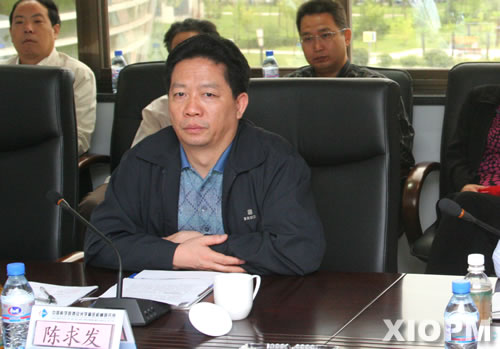
Twelfth-Five Year Plan Accelerates Civil-Military Integration in China’s Defense Industry
Publication: China Brief Volume: 11 Issue: 1
By:

China’s defense-industrial complex is emerging from the shadows of its troubled past. While weaknesses and limitations in the Chinese defense industry remain, in recent years it has produced a wide range of advanced weapon systems that has markedly enhanced the country’s military capabilities and demonstrated the prowess of the Chinese military-industrial complex. These developments reflect, in part, the considerable progress made by reforms that had been enacted in the late 1990s. As the Chinese authorities gear up to launch the 12th Five Year Plan (2011-2015), which serves as the country’s blueprint for the next five years, recent statements made by a high-ranking Chinese official suggest that Beijing plans to accelerate defense industry reforms in the next Five Year Plan (FYP). These initiatives will likely boost indigenous capabilities, technology in national defense, and integration of defense industry and civil enterprises, which could substantially contribute to the long-term modernization of the country’s military capabilities.
On December 30, 2010 at the 2011 Science, Technology and Industry for National Defense Working Committee meeting held in Beijing, Ministry of Industry and Information Technology (MIIT) vice minister, State Administration for Science, Technology and Industry for National Defense (SASTIND) Director Chen Qiufa outlined seven major missions of the 12th Five Year Plan (2011-2015): 1) complete the mission of scientific research & development (R&D) of military arms; 2) strive to build core advanced military industrial capabilities; 3) accelerate the promotion of innovation in science & technology (S&T); 6) actively promote scientific R&D in informationization, 7) perfect the robust integration of a civil and military joint development system; 8) continue the expansion of global cooperation; and 9) vigorously strengthen the human resources corps of the military industry (Xinhua News Agency, December 30, 2010).
Moreover, Chen stated that as the inaugural year of the 12th FYP, the major objectives of 2011 will be to: maintain at least 15 percent year-to-year (yoy) growth of the military industrial economy; upgrade core military industry capabilities; promote S&T innovation; advance civil-military integration; successfully execute major projects like lunar exploration; and locating military potential in civilian capabilities, among others (Xinhua News Agency, December 30, 2010; Ta Kung Pao [Hong Kong], December 31, 2010).
Maintaining at least 15 percent growth (yoy) in China’s military-industrial economy could strengthen the military industry’s R&D efficiency and lead to the development of new technologies through investments by companies interested in dual-use industries throughout the military and civil sectors. Furthermore, Chinese military industry’s expanding presence in international markets, particularly those in the West, would allow it to gain more access to dual-use technologies and generate additional revenue streams that can be directed to its military R&D.
A recent article from the Global Times—an offshoot of the People’s Daily—revealed that China plans to complete shareholding reforms of its military industries within three to five years—before the end of the 12th FYP—in order to accelerate the process of integrating with civilian businesses and to raise more funds from capital markets (Global Times, January 7). As one of seven major tasks for defense-related science, technology and industry under the 12th FYP, the apparent "marketization" of China’s military-industrial complex would attract capital and encourage greater competition in China’s military-industrial complex, which could stimulate innovation and meet the demands of the People’s Liberation Army’s (PLA) systems requirement.
According to the Global Times, the completion of the reforms is also one of five targets set by the State Council and the Central Military Commission under a guideline for the improvement of a research and production system for weapons and equipment. The ‘Development Program of S&T for National Defense 2006 to 2020’ and its civilian counterpart, the ‘Guidelines for the Medium- and Long-Term National S&T Development Program 2006 to 2020’, which were both promulgated in 2006, represent a comprehensive blueprint for the ambitious plans outlined by Chinese military industries to technologically leap frog their way to predominance by 2020. According to Chinese military expert Liu Jiangping: "The guideline has upgraded military and civilian integration to a national strategy. This is a way to revitalize those companies through actively participating in market competition" (Global Times, January 7).
Indeed, China’s military-industrial complex appears to be making significant strides in casting off its inefficient and suboptimal standards. Market forces are factoring more prominently in China’s drive to modernize its military-industrial complex. According to the U.S. Department of Defense’s "Military and Security Developments Involving the People’s Republic of China 2010": "Augmented by direct acquisition of foreign weapons and technology, [defense industry] reforms have enabled China to develop and produce advanced weapon systems that incorporate mid-1990s technology in many areas, and some systems—particularly ballistic missiles—that rival any in the world today." To be sure, however, China’s military-industrial complex still faces a number of shortcomings. Nevertheless, as Chinese reform of the military industry proceeds on pace, technological breakthroughs in weapons R&D and production will likely follow, thus enabling the PLA to increasingly close technology and capability gaps with the world’s advanced military industrial powers.





